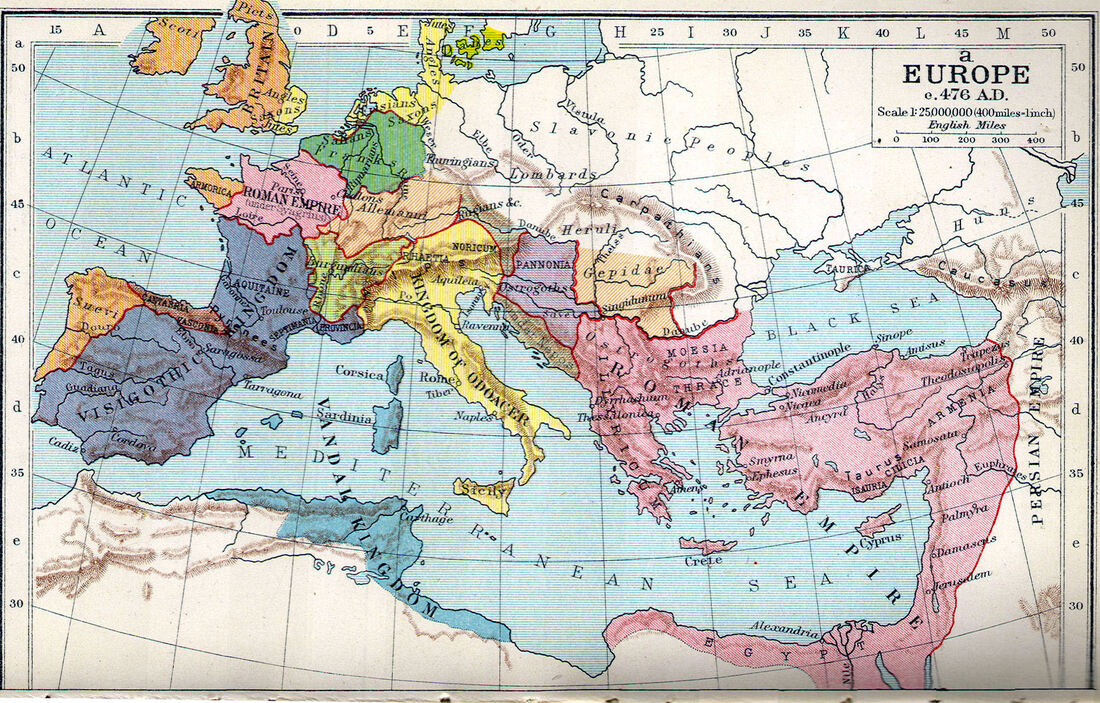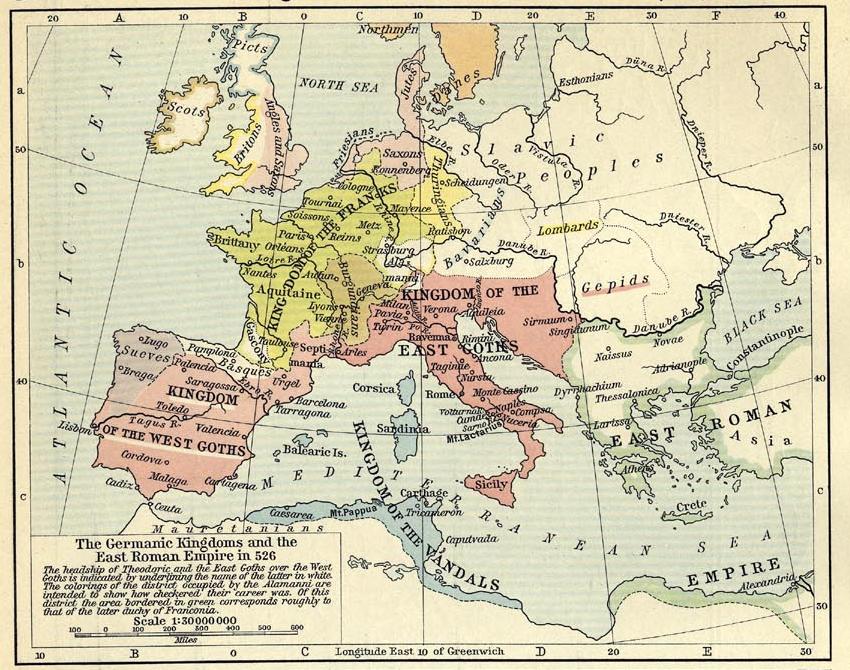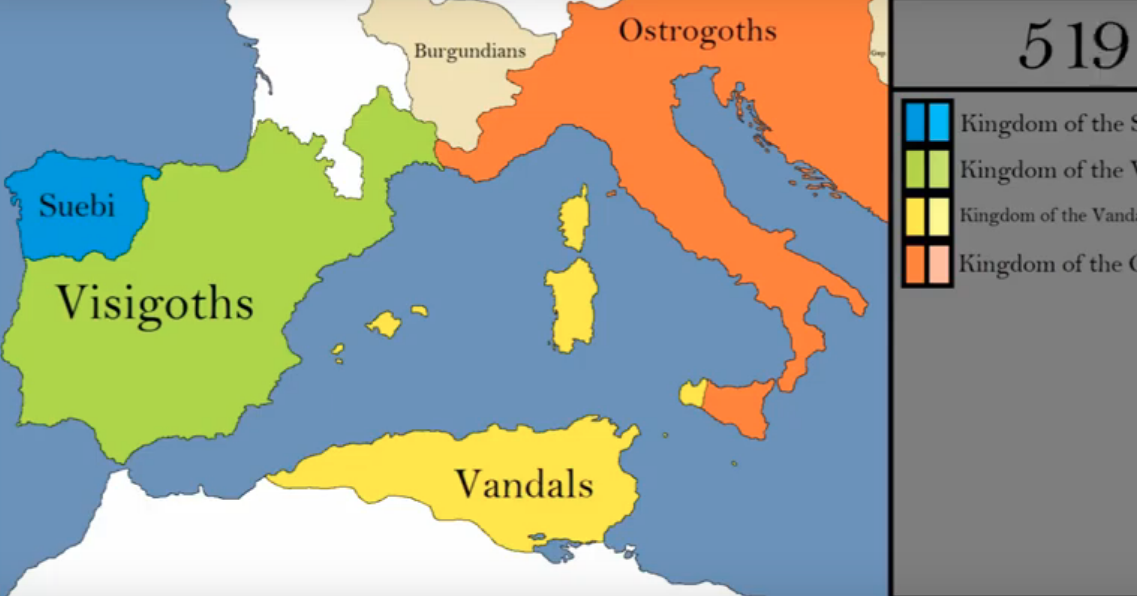
The Barbarian side
Several barbarian kingdoms were then set up: in Africa, Gaiseric's kingdom of the Vandals; in Spain and in Gaul as far as the Loire, the Visigothic kingdom; and farther to the north, the kingdoms of the Salian Franks and the Alemanni. The barbarians were everywhere a small minority.

Pin on Roman Empire
Roke In 500 BC, Rome was a minor city-state on the Italian peninsula. By 200 BC, the Roman Republic had conquered Italy, and over the following two centuries it conquered Greece and Spain, the.

7th Grade World History Unit 4 Mr. Sabon's Social Studies Site
The Migration Period, also known as the Barbarian Invasions, was a period in European history marked by large-scale migrations that saw the fall of the Western Roman Empire and subsequent settlement of its former territories by various tribes, and the establishment of the post-Roman kingdoms. [2]

Challenge Surviving Barbarian Kingdoms Alternate History Discussion
The Later Roman Empire and the Barbarian Kingdoms (AD 300 - 600) Fall of empire as a historical problem. There is no end to historical speculation about the why the Roman Empire "fell", but all agree on the following:. (Byzantine aka "Roman") government was replaced by barbarian kingdoms. Map exercise:.

The Migration Period. Historical atlas of modern Europe.
Barbarian Kingdoms of Europe (526 CE) World History > Barbarian Migrations > Barbarian Migrations Maps and Pictures : Map of the Germanic kingdoms and the East Roman empire in 526 C.E./A.D. - The headship of Emperor Theodoric and the East Goths (Ostrogoths) over the West Goths (Visigoths) is indicated by underlining the name of the latter in.

Warfare in Medieval Europe c.400—c.1453
barbarian invasions, the movements of Germanic peoples which began before 200 bce and lasted until the early Middle Ages, destroying the Western Roman Empire in the process. Together with the migrations of the Slavs, these events were the formative elements of the distribution of peoples in modern Europe.

NationStates Dispatch The Barbarian Kingdoms Map
The barbarian tribes were nomadic and until their migrations south and eastward were barely in the consciousness of the early Christian hierarchy and faithful. The Roman system of rapid communication by its extensive road system ended at its borders.. and the eventual conversion of the subjects of these tribe and kingdoms. He speaks of Ufila.

The Emergence of Barbarian Kingdoms in Western Europe with the
Find local businesses, view maps and get driving directions in Google Maps.

Barbarian Kingdoms at the Time of Justinian
Overview In this lecture, Professor Freedman considers the various barbarian kingdoms that replaced the Western Roman Empire. Oringinally the Roman reaction to these invaders had been to accommodate them, often recruiting them for the Roman army and settling them on Roman land.

The emergence of barbarian kingdoms World History History of the
The term " barbarian " has been commonly used by historians. Other terms used include "Northern European kingdoms", "Romano-northern European kingdoms", [1] and "post-Roman kingdoms". Historically, the period of the barbarian kingdoms spans the years from 409 to c.800. It begins in 409 with several barbarian kingdoms being established on the.

From Wikiwand Barbarian kingdoms in 526 before reconquest under
Here is a brief introduction to the 5 major barbarian successor states. 1. The Vandal Kingdom In North Africa After the Fall of Rome Bronze numis, from Vandal Africa, 5th century, via the British Museum

The barbarian invasions of the late Roman Empire. Italy history
Diocletian's short-lived military Dominate (284-305) was succeeded by Constantine's ignoring the lower orders while bringing the aristocracy back into government in the West, where their importance grew until the dissolution of the Western Empire into a patchwork of 'barbarian' kingdoms. The influence of a composite Romano-Germanic aristocracy.

Barbarian Kingdoms of Europe Map Student Handouts
The Barbarian Successor Kingdoms Of The Roman Empire In the wake of the collapse of the Western Roman Empire in 476 CE, dozens of kingdoms and chiefdoms were formed by the various barbarian tribes that had come and settled into Roman territory.

How the borders of the Barbarian Kingdoms changed in the Middle Ages
The history of the Barbarian Kingdoms focuses on the polities established by various Germanic and migratory Asian peoples in Western Europe and North Africa after the demise of the Western Roman Empire in the fifth century.

Europe and the Near East at 476 AD Saxons Wikipedia Middle east
Not one of the Germanic kingdoms of 750 had arisen at the direct expense of the fifth-century empire: the Anglo-Saxons had descended in force upon an already abandoned Britain; the origins of the huge regnum Francorum lay with Clovis (c. 481-511); the Lombards had entered Italy only in 568.

Barbarian Invasions (Rome Never Splits) Barbarian, Roman empire map
Political map of Europe, North Africa and the Middle East in 476, showing the remaining Eastern Roman Empire in the Eastern Mediterranean and the various new kingdoms in the territory of the former Western Roman Empire. The barbarian kingdoms, also known as the post-Roman kingdoms, the western kingdoms, or the early medieval kingdoms, were the states founded by various non-Roman, primarily.